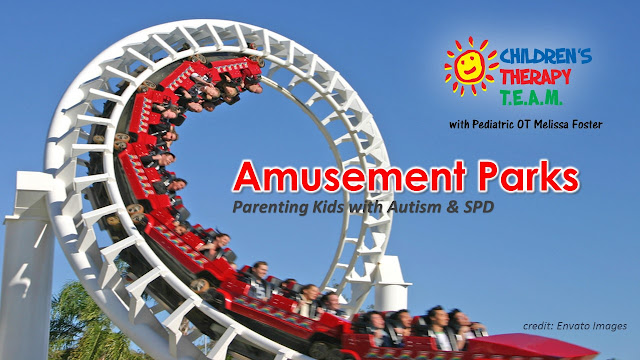Dear Melissa,
Help! My
kids start back to school soon. It seems as if the summer has simply flown by and we have not had time
to truly enjoy it. What are some
cheap/free things we can do as a family before we get back into the school
routine?
I can’t lie. Summer is my FAVORITE season. I like nothing
better than hanging out on my back porch, either as a family, or alone and
curled up with a good book. Heat index
100? Bring it on. That just calls for
moving the lawn chair under the shade tree and adding extra ice to my tea!
I, too, begin to feel the
panic that sets in after Independence Day. Summer is ending. So much is left to do. How do I prioritize? Here is a
list of some of my absolute favorite family-friendly activities that are
appropriate for all levels of abilities and require little-to-no money and
little-to-know Pinterest savvy!
Water day. It’s a no-brainer. Most people don’t have the luxury of their own swimming pool, but this is no excuse to stay dry on a hot day! Fill random buckets with water and grab a
bunch of Dollar Store water soakers and sponges. Spread throughout your back yard and let the
water fun begin! Want to get a bit
fancier? Adding water balloons to the
mix is an obvious choice. Preschool and lower elementary-aged kiddos also
enjoy having various plastic bowls/cups/spoons for playing kitchen. Another good choice is having your little
Picassos draw with sidewalk chalk, and then use the water cannons to erase their masterpieces. Want even more inexpensive ideas for water
day? Visit my Water Day Blog from last
year!
Ice Age. Again, it’s crazy hot
outside. You can create a
frozen wonderland to cool things off. Take plastic figures (dinosaurs, action figures, etc.) and freeze them in
large bowls of water. Then, simply give
the kiddos some small hammers, nails, butter knives, forks, etc to chisel the
creatures out. (Obviously taking into consideration the fine motor skills and safety awareness of
your little ones!) Get buckets of ice
water, throw in some sponges, and have a “snowball” fight. Add in an afternoon snack of popsicles or ice
cream, and you have created a full afternoon of frozen fun!
Back Porch Time. This
one is super easy. Simply take your
favorite frozen afternoon snack, sit outside with our kiddos, and ponder the
big questions in life without the
interruptions of all of those fancy electronic devices. (The ban on electronics goes for you too Mom
& Dad!) So far this summer, my 4 & 7-year-old and I have had some very
interesting debates: evolution vs.
creationism, t-rex vs triceratops, Washington vs. Lincoln, Santa vs Easter
Bunny, apples vs. pears…you get the idea. Sometimes the conversation will be heavy (and followed by the very
necessary point that we DON’T then discuss religion & politics at school!), and other times it is very silly and mundane. The point is that you are talking to
your children.
Car Wash. Do you notice a theme
yet? I like to be outside, but I like to
be able to keep cool. Park your car in
the driveway. Grab some buckets,
sponges, dish soap, and your trusty water hose. The kids get to get wet, messy, stay cool...and your car gets clean. Now that's a win-win!
Tent. Set it up either outside or inside. Store-bought or home-made from an old
sheet. Help the kiddos set up a tent and
then actually spend some time together inside. Read books, tell stories, have a picnic, go crazy! Feeling a bit more
adventurous? Grab some sleeping bags and
actually spend the night in it!
Write. Ok, you have been meaning to have the kids
sit down and do this all summer, but there is no time like the present. As I put it to my own kiddos: “Don’t do it
for your mother, do it for yourself. Some day you will be a grown-up, and you will like to remember what you
were doing when you were a kid”. It is
often too hot to play in the afternoon anyway, so why not take a writing
break? For the little ones, have them
draw/color a favorite activity or particular interest. For older children, have them write a few
sentences on what they liked best about this summer. Even better, have an older child write their
own book. Make it a big deal that you
are placing this in a “forever spot” to keep and share when they are grown.
Read. School days will be upon us before you know it. Now is the time to make reading fun. Again, the important word here is fun. Allow even big kids to snuggle on
the couch as you read to them. Allow
children to read comic books or items of interest that may be below their
reading level. Take them to the library
or bookstore and allow them to explore. Show them that you too enjoy reading by reading frequently in their
presence. It is never too late to foster
a love for reading!
That thing. You know…that thing. That thing that you have been wanting to do
all summer, but haven’t found the time to do? Well go do it! Make time! You only have a few weeks left.
What are your plans for the
last few weeks of summer?
Do you have a bucket list? If so, please share!
Resources:
Activities Under $10 That Will Keep Your KidsBusy All Summer Long, Mike Spohr, www.Buzzfeed.com (accessed July 2015)
10 Fun Things To Do With Your Kids This Summer, Kellye Carter Crocker, Parents.com (accessed July 2015)




